Funeral urban and holy. However there are also some paintings from sacred sites and some.
Etruscan Tomb Paintings Ancient Man And His First Civilizations
A visit to the Etruscan tombs at Tarquinia is complemented well by the National Etruscan Museum in the centre of Tarquinia where you can see artefacts that were taken from the city of the dead including sarcophagi decorated with carvings of animals.
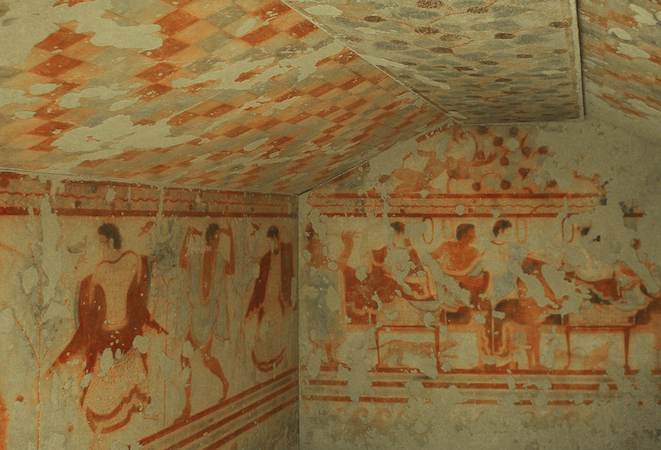
. Seen on sarcophagi and tomb paintings and Etruscan tombs are commonly likened to representations of banquets in non-funerary domestic buildings and tombs are often contexts as elucidated above indicates that the conceived of in scholarship. Etruscan painting technique was characterized by painting directly on fresh plaster so that the paint adhered to the plaster and thusly became part of the wall itself. Fortunately though the Etruscans cared very much about equipping their dead with everything necessary for the afterlifefrom lively tomb paintings to sculpture to pottery that they could use in the next world.
They showed scenes of parties banquets ceremonies hunting sporting events important leaders and mythological figures or gods. Many Etruscan sites primarily cemeteries and sanctuaries have been excavated notably at Veii Cerveteri Tarquinia Vulci and Vetulonia. Later techniques included those such as chiaroscuro which gives greater depth and value.
As noted above his letter begins with a reference to the many Etruscan antiquities unearthed in Tuscany so many in fact that I do not wish to give an account here of everything ever found. In some instances however painted terracotta panels were made separately and mounted to form an extended narrative frieze. Of those 140 are from Tarquinia.
Within Etruscan art tomb painting is a special topic. Etruscan public buildings and tombs were frequently ornamented with paintings which were usually applied directly to the walls of the structure or chamber. The Etruscans were isolated from other cultures.
The others are scattered across different cities and time periods. Most of the potteries were however Greek in origin that were taken by the Etruscan and put in their tombs. The blade in your razor should be replaced.
This floor was my personal favorite because of the interesting drawings on the potteries. At the end of the 1990s excavation revealed remains of this aedicule tomb carved into red tuff. The Tomb of Hunting and Fishing and the Tomb of the Leopards depict typical Etruscan funerary imagery in a common Etruscan painting style.
Etruscan religion appears to have revolved around various beliefs and practices disseminated by seers and priests. Since most Etruscan cities are still inhabited they hide their Etruscan art and architecture under Roman Medieval and Renaissance layers. Etruscan painting was highly developed and used pigments created from stone and minerals.
The third floor had a gorgeous view of the city and contained transferred Etruscan tombs and other objects found at the sites. In 2004 further excavation highlighted new important figurative elements. Since most Etruscan cities are still inhabited they hide their Etruscan art and architecture under Roman Medieval and Renaissance layers.
The Tomba dei Demoni Alati is located in the Etruscan necropolis of Sovana Grosseto Southern Tuscany Italy. Many surviving paintings are those on wall frescoes at burial sites. Tomb paintings Etruscan were funeral rites or optimistic scenes of aristocratic pleasures of----- Tomb of the Augurs in Tarquinia The figures stand on a horizontal ground line flanking the closed door leading to the underworld.
TinTinia was the Etruscan equivalent of the Greek Zeus and Uni was his wife. This shows that these roofs might corroboration between the banqueting motifs equally be compared to domestic structures. Etruscan tomb paintings survive in a very narrow geography and context.
Because of Etruscan ideas about the afterlife the majority of the art that has survived is funerary in nature. Tombs were often highly decorated with details of funeral rites detailing funeral feasts and processions the gods of the underworld and the games used to commemorate the dead. From very early on the Etruscans were in contact with the Greek colonies in southern Italy.
From tomb paintings and altars we know that they believed in a variety of gods and goddesses some of whom were adopted from Greek religion. The Etruscans art is divided into three categories. The teams research is ongoing and more paintings may be revealed in the.
The tomb was discovered in the 19th century but now with the new technology the painting has become much more visible. The scenes relate to Etruscan culture and society and show the inclusion of women in a symposium and a close connection to nature. Wall murals were exceptionally colorful and typically depicted images of Etruscans having a good time at feasts and banquets.
The paint used by the Etruscans was made of plants and organic matter. Fortunately though the Etruscans cared very much about equipping their dead with everything necessary for the afterlifefrom lively tomb paintings to sculpture to pottery that they could use in the next world. Theres an impressive collection of items from the era of the Etruscans with things like.
Funeral games honoring the dead were an integral part of Etruscan funerary ritual. Every level of Etruscan society had frescoes on their tombs. Very few tomb paintings are found in the northern half of Etruria.
Some of the best examples of Etruscan painting are found in ancient tombs. Footnote 82 Adriani himself wrote to Soderini that Etruscan objects were continuously being unearthed in Tuscany no doubt from Etruscan tombs and alludes to his familiarity with them. Tomb paintings suggest that gladiatorial contests could have had their origin in these funeral games.
The Etruscans used different methods to decorate the rock surfaces of the tomb which were. Etruscan paintings were colorful and full of life. Numerous Etruscan tomb paintings portray in vivid color many different scenes of life death and myth.
Tomb interiors also contain much information about Etruscan life. About 180 Etruscan paintings are known.
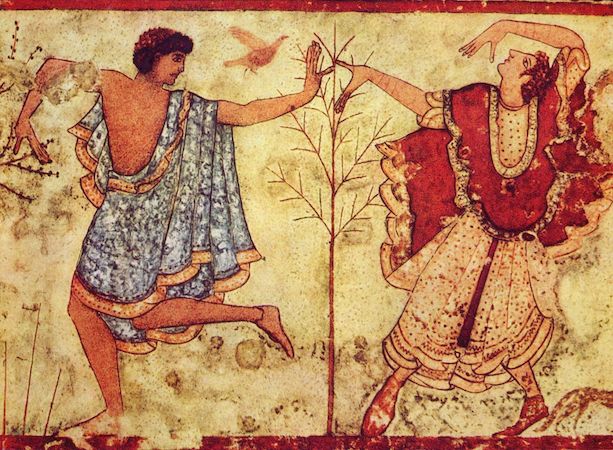
Tomb Of The Triclinium Article Khan Academy

The Story In Paintings Genocide And An Etruscan Tomb The Eclectic Light Company
Etruscan Tomb Paintings Ancient Man And His First Civilizations
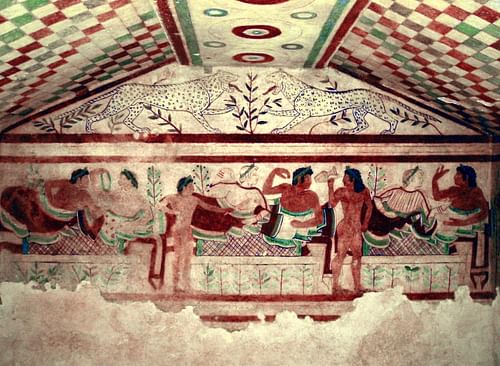
Etruscan Tomb Paintings World History Encyclopedia
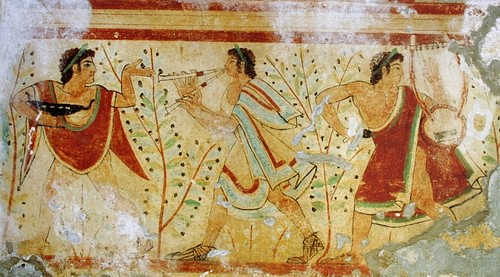
Tarquinia World History Encyclopedia
Etruscan Tomb Paintings Ancient Man And His First Civilizations
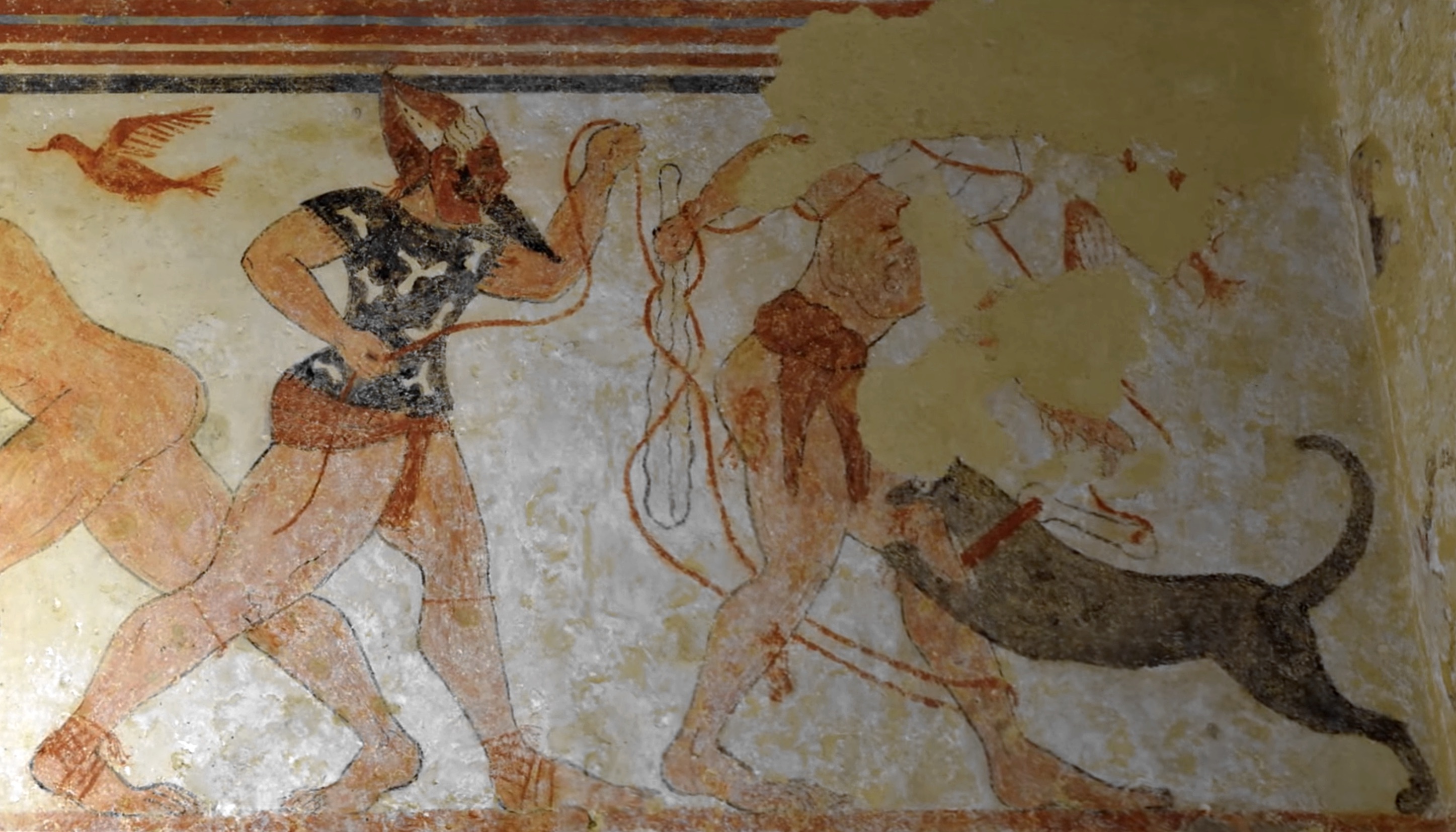
0 comments
Post a Comment